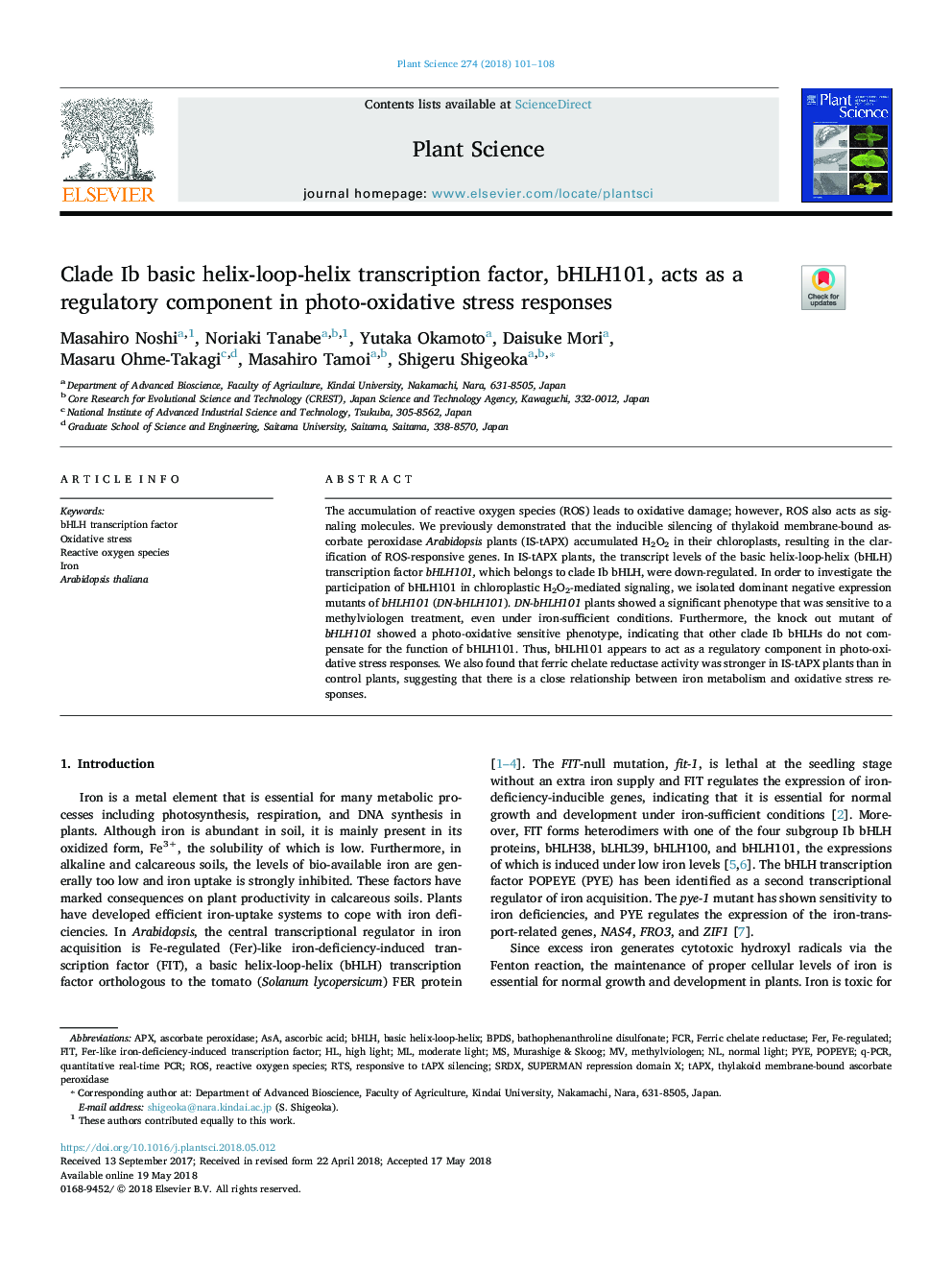| Article ID | Journal | Published Year | Pages | File Type |
|---|---|---|---|---|
| 8356216 | Plant Science | 2018 | 8 Pages |
Abstract
The accumulation of reactive oxygen species (ROS) leads to oxidative damage; however, ROS also acts as signaling molecules. We previously demonstrated that the inducible silencing of thylakoid membrane-bound ascorbate peroxidase Arabidopsis plants (IS-tAPX) accumulated H2O2 in their chloroplasts, resulting in the clarification of ROS-responsive genes. In IS-tAPX plants, the transcript levels of the basic helix-loop-helix (bHLH) transcription factor bHLH101, which belongs to clade Ib bHLH, were down-regulated. In order to investigate the participation of bHLH101 in chloroplastic H2O2-mediated signaling, we isolated dominant negative expression mutants of bHLH101 (DN-bHLH101). DN-bHLH101 plants showed a significant phenotype that was sensitive to a methylviologen treatment, even under iron-sufficient conditions. Furthermore, the knock out mutant of bHLH101 showed a photo-oxidative sensitive phenotype, indicating that other clade Ib bHLHs do not compensate for the function of bHLH101. Thus, bHLH101 appears to act as a regulatory component in photo-oxidative stress responses. We also found that ferric chelate reductase activity was stronger in IS-tAPX plants than in control plants, suggesting that there is a close relationship between iron metabolism and oxidative stress responses.
Keywords
Related Topics
Life Sciences
Agricultural and Biological Sciences
Plant Science
Authors
Masahiro Noshi, Noriaki Tanabe, Yutaka Okamoto, Daisuke Mori, Masaru Ohme-Takagi, Masahiro Tamoi, Shigeru Shigeoka,
